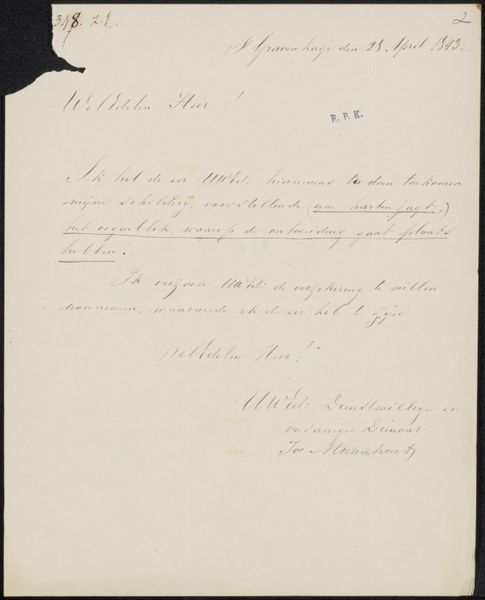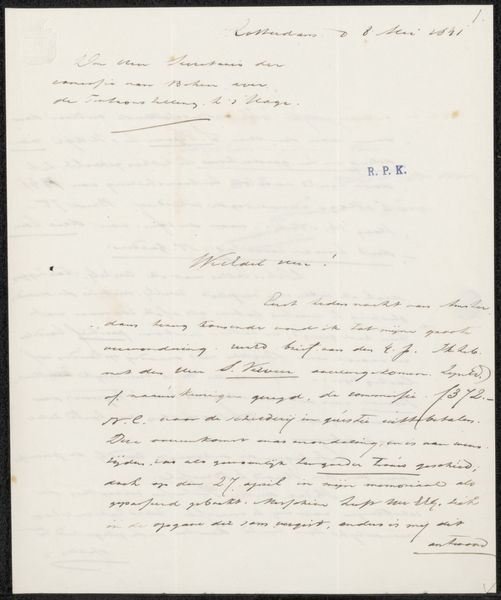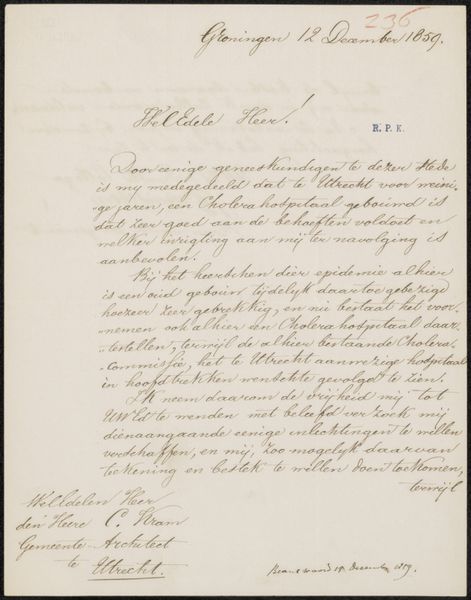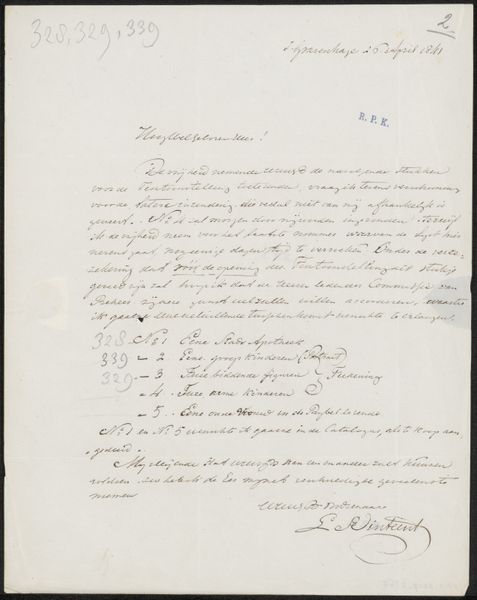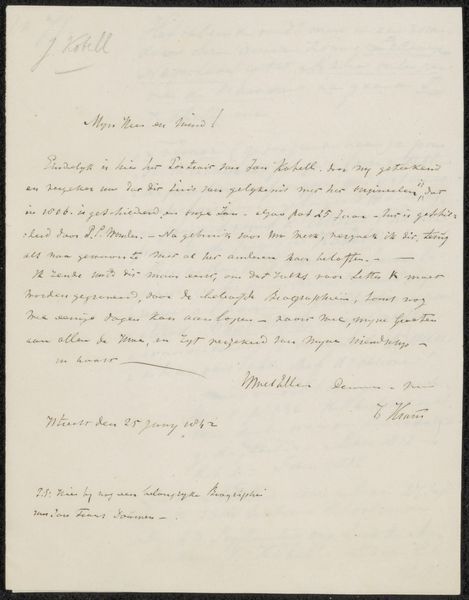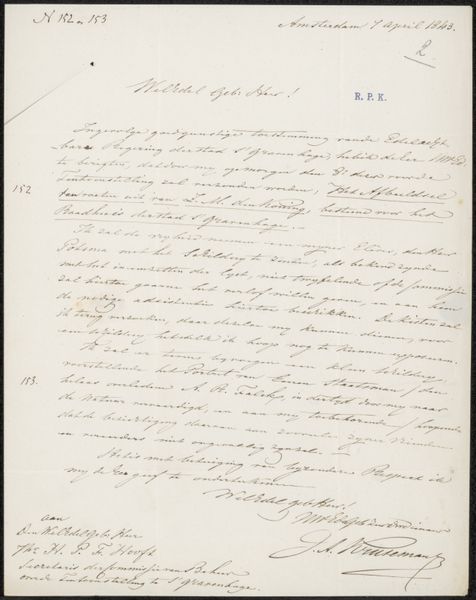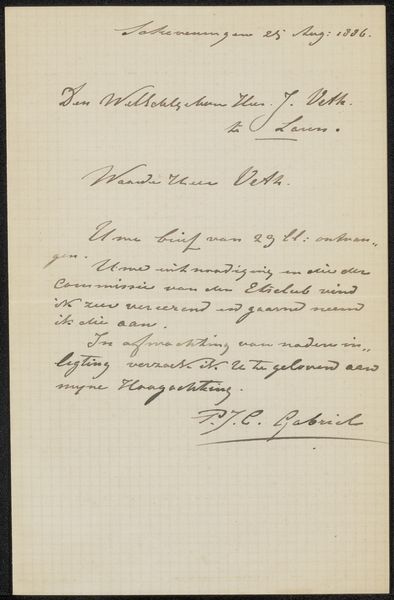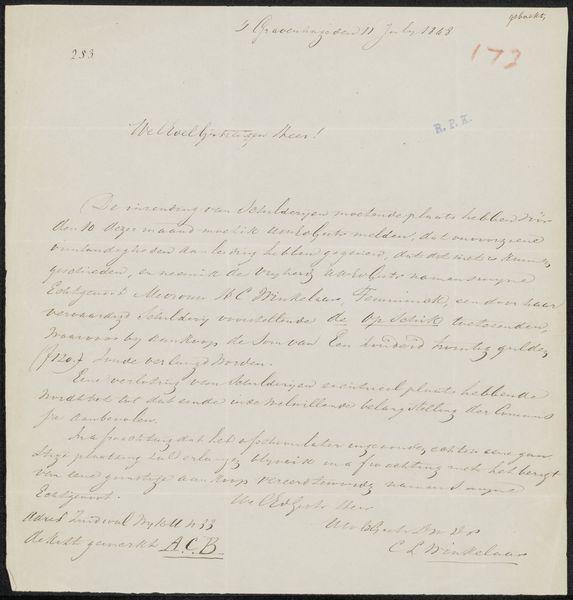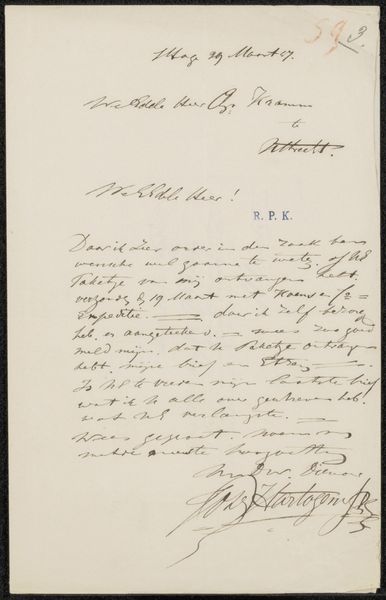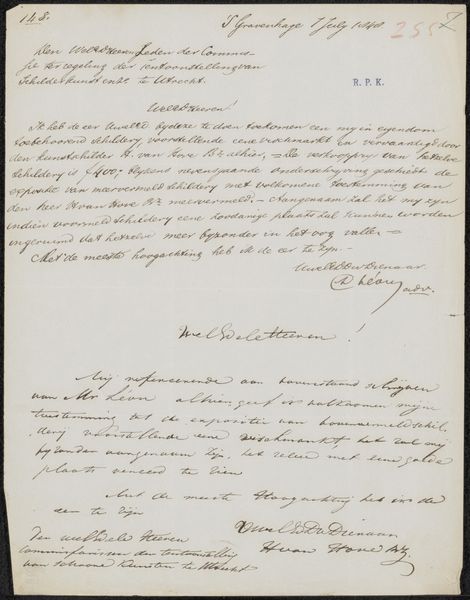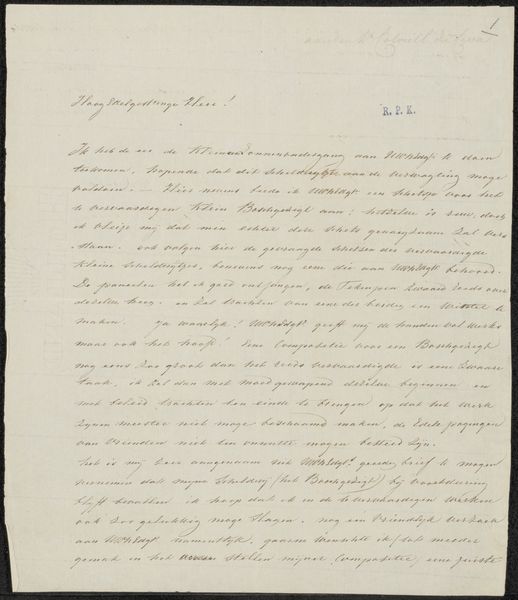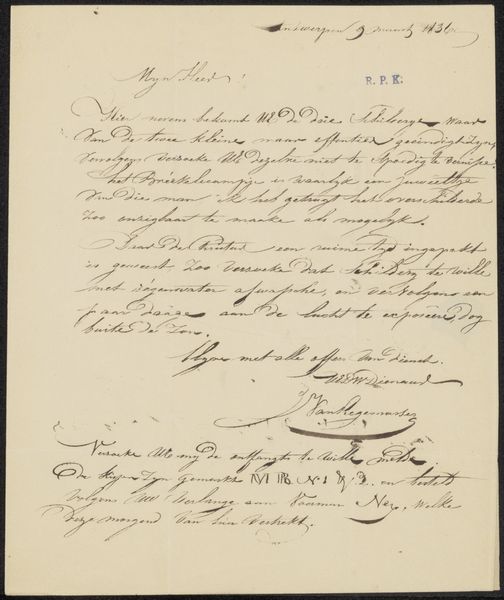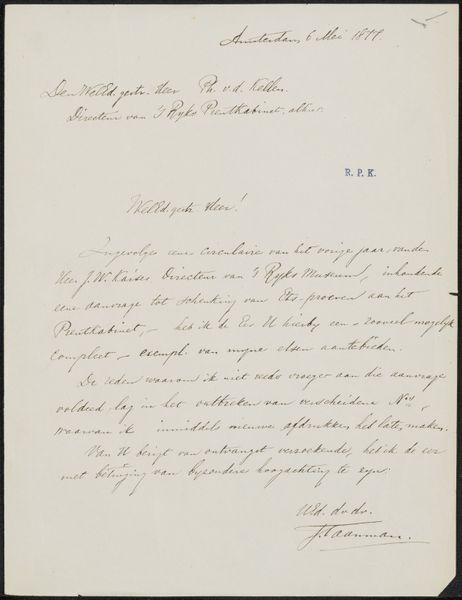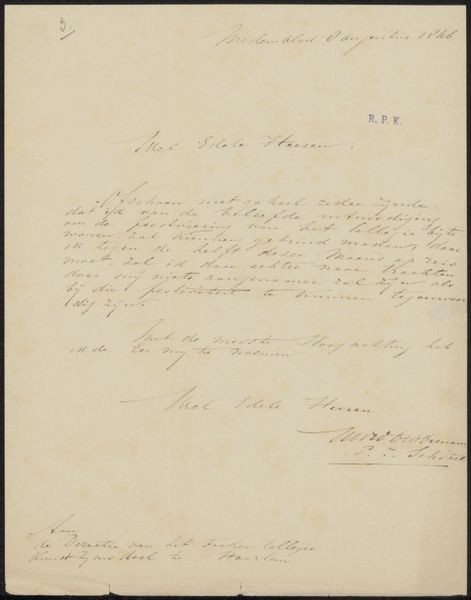
drawing, paper, ink, pen
#
drawing
#
light pencil work
#
narrative-art
#
dutch-golden-age
#
ink paper printed
#
hand drawn type
#
paper
#
personal sketchbook
#
ink
#
ink drawing experimentation
#
pen-ink sketch
#
ink colored
#
pen work
#
sketchbook drawing
#
pen
#
sketchbook art
Copyright: Rijks Museum: Open Domain
Curator: This delicate ink and pen drawing is entitled "Brief aan Jan Jacob Lampsins van den Velden," and it’s thought to have been created around 1848 by Jean Philippe te Winkel. The support is paper, so the work's creation seems swift. Editor: Indeed, it's quite a spartan affair, quite literally at first glance, with its minimal linework and what appears to be a letter form. I get a strong impression of formality—a restrained, almost austere communication, perhaps intended for the eyes of a single recipient. Curator: Yes, the inscription is what draws the eye; you’ll notice the hand-drawn type across the document. This use of carefully lettered text merges form and function—we appreciate the beauty of the script while it conveys a very specific message. In its time, of course, such a meticulously written document was also an act of labor, performed by hand, therefore invested in socio-political structures. Editor: Right, the social aspect comes in here. And this labour and script seem intended for a certain recipient, with the implication of unequal social statuses for each correspondent; what about this recipient then? Curator: The recipient, Jan Jacob Lampsins van den Velden, might have been a wealthy landowner. Editor: I see what you're getting at; by addressing someone with such formality, the letter underscores the social stratification of the period. It shows how communications weren't just about exchanging information, but reinforcing hierarchies. We understand the art and beauty through this letter’s construction, with its elegant penmanship and balanced layout on the page. The script conveys its intentions and its social reality simultaneously. Curator: Precisely. This is why it warrants our close visual attention in this present moment. Through such engagement with both artistry and social positionings, new avenues for interpretation of the artwork appear, therefore bringing this letter to light for its various qualities. Editor: Agreed; examining both the aesthetics and the sociohistorical setting around this pen drawing and paper makes us rethink how simple acts can mean a great deal when thinking about artwork analysis.
Comments
No comments
Be the first to comment and join the conversation on the ultimate creative platform.
